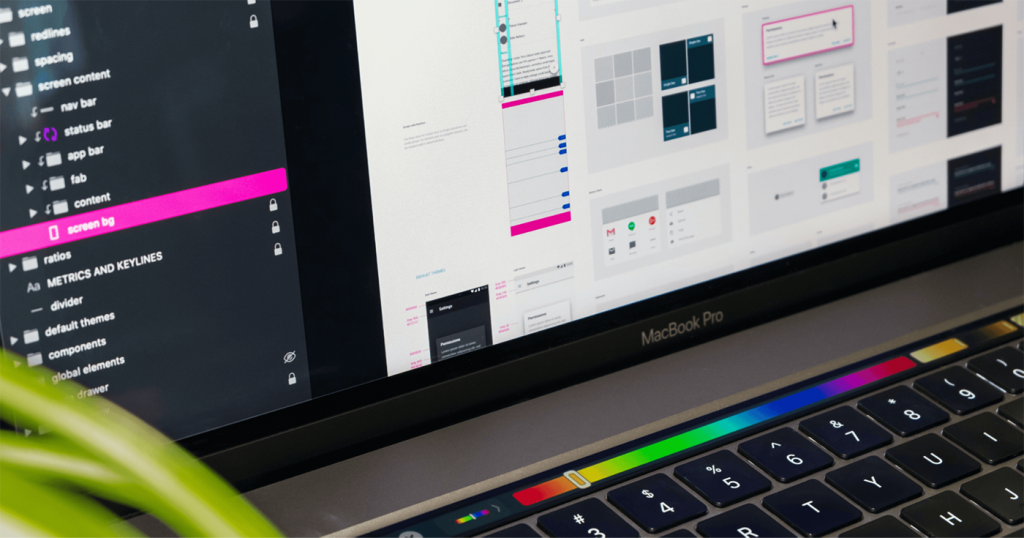
Great branding never comes to an end — as we’re sure, after 8 black coffees per night trying to finish your latest rebrand, you don’t need to be told.
The whole point of building a strong brand is essentially to develop and cement how your customers AND your teams perceive your brand, so that everyone is aligned on what exactly it stands for. Basically, your brand is your business’ personality.
However, constant changes like the remote workplace, new digital technologies, and more distribution channels than you’ll probably ever need can make keeping up with things daunting. And it’s not made any better if you still have to manually track your teams’ progress and approvals.
So, why are we telling you something you already know? Because brand management is the all-encompassing process you need to get factors like your brand equity, brand loyalty, and brand awareness all on point. And with the right help from the right software solution, you can guarantee that your brand will always be at the top of its game.
Keep reading to find out the five advantages you’ll get out of perfecting your brand management here and now!
Suggested reading: Need a bit of an explainer on the ins-and-outs of brand consistency? Get started with The Brand Consistency Toolkit whitepaper!
Advantage 1: Brand consistency
A consistent brand is an effective brand; and that consistency starts from within your own company.
Your brand assets (logos, fonts, really any content which makes up your brand identity) are what your teams use to create new content for your business. So having these assets scattered across multiple content creation tools needlessly complicates your internal teams’ workflows, leading to duplications, off-brand assets hanging around, and the worst outcome of them all, brand inconsistency.
This is where some of the core features of brand management software (BMS) can help! For a BMS platform that can really streamline your brand consistency, look for a solution that has features like:
- Digital asset management (DAM): This single online system allows you to upload, store, and manage ALL of your brand assets, effectively centralising your entire operations. Easily updatable with rebrands, additional features include…
- Permission-based access: This gives you the ability to give teams access only to the assets that they need for their specific task.
- Smart search system: Assets are organised according to their function, so that your internal teams can find what they need, when they need them.
- Web-to-publish templates: These are essentially on-brand, pre-approved, and editable asset templates that make it all the easier for your teams to carry out low-level art changes, saving them time and effort. An especially handy software platform will enable any of your team members to do these changes regardless of their technical and/or design skills.
- Brand guidelines: Your teams will have access to these easily editable and shareable “brand-bibles”, ensuring that your brand messaging and vision remains at the forefront of everyone’s creative decisions. Plus, you can rest assured that any updates to these guidelines won’t be missed, as everyone will have access to the same source.
- Brand showcasing: This serves as a focal point for your teams to upload their best and most successful campaigns, reducing duplications of content, helping your brand stay consistent, and ensuring your teams stay inspired!
- Integrations: It’s all well and good to have a great BMS platform, but if it can’t integrate with your most crucial, fundamental apps, then it’ll bring more problems than help. So look for a platform that can provide the whole host of helpful, innovative features we’ve just talked about AND work well with branding mainstays like Adobe Creative Cloud, Google Workspace, and Microsoft Office.
Remember, assets ARE your brand identity, so keeping them consistent guarantees they make rather than break your branding.
Advantage 2: Optimised workflows
Setting tasks, deadlines, and ensuring your teams execute on-brand projects is all part of your job as brand manager. But manually checking ALL the content your teams produce on every channel is an impossible task — however, cutting corners on approvals could severely damage your brand image as well as your customer loyalty.
The same goes for trying to communicate with your team through a 200 chain email, making it a pain for creatives to access the details they need to move forward with projects.
Everyone ends up working, quite literally, on different pages. So here are some key BMS features to help you streamline your teams processes and workflows:
- Workflow approvals: Simplify your feedback processes by automating the management of how your teams work, allowing:
- Complete visibility on all content produced: Know what your teams are working on, and when, so that you can maintain control over what gets done without any painstaking admin duties.
- Easy annotations: Input feedback and maintain clear communications with your team to ensure projects move in the direction your brand needs. All of this feedback is also recorded against the asset.
- Alerts and notifications: Prompt your teams on upcoming deadlines and notify them about any critical changes to help them stay on track.
- Reporting and analysis: Understand what’s going on with your brand, using visual data reports to fine tune your operations with your best performing content. This feature is especially important to making sure that your investments are being put to best use, as you can assess the ROI of your brand assets and applications based on how they’re being used. And at a time when marketing budgets are especially fragile, you’ll want to make sure yours is primed for 2023.

Advantage 3: Assured compliance
Nothing is more important than your customers. This is the philosophy that compliance and regulation best practices promote, ensuring that your loyal customers are protected from malpractice by businesses, particularly in industries with high social responsibility such as in law and ESG (environmental, social, and governance) industries.
We don’t doubt that you have the best intentions towards your customers and fully care about cementing a good brand image for yourself. However, there are just too many laws and regulations, all of which are prone to changing, that can be difficult to keep track of, much less consistently implemented across your many brand assets and disparate teams.
Here’s how you can use BMS features to preserve your brand’s safety so that you don’t risk undermining your reputation as a safe, fair, and ethical business:
- Web-to-publish templates: Easy to update with new regulation changes, as well as regional and international disparities, these templates ensure that your teams can seamlessly localise their assets, while maintaining brand consistency.
- Brand guidelines: Educate teams on the latest changes in regulations through editable and shareable guidelines.
By adopting these features, your brand can remain compliant, stand out in the market as a brand of integrity, and keep both your target audience and employees satisfied.
Advantage 4: Winning global strategies
Did you know that eight in 10 workers have long planned on continuing to work at least partially from home, even as lockdowns have pretty much stopped being a thing? That may seem like a potentially scary fact but considering this vastly widens the scope for brands to expand themselves on a global scale, it should instead Fbe considered as a major growth opportunity.
However, when you aim for the stars (or at least across the pond), maintaining a consistent brand identity across the globe isn’t easy. You’ll need to ensure that ALL of your brand assets are easily adaptable to entirely different languages and cultures, on top of the compliance standards we covered just above. That’s without even considering the possibility of hosting multiple brands as your business grows.
Fortunately, BMS features can help keep your brand identities feeling distinct, regardless of how big your brand gets!
- DAM software: Keep your content centralised even as it grows with:
- Safe and secure sharing of files between international teams.
- Easy access to up-to-date assets as well as intelligent metadata tagging to make search functions as seamless as possible.
- Web-to-publish templates: Easily editable to comply with local customs and adaptable to different languages, these templates also assist in transitioning your brand assets to any and every global market. Avoid getting your brand’s messaging lost in translation or even potentially offending any local consumers.
- Brand guidelines: Keep your teams up to date with their region’s regulations, and ensure wherever your team are, they know exactly how to re-build your brand from scratch while maintaining a consistent, global image.
So as you can see, technology like BMS is a must have if you want to grow your brand across international divides.
Advantage 5: Addressing new developments
Everything has to evolve to survive, including your brand. From the boom of social media to an increased focus on climate change, consumer habits are now massively influenced by the world around us at a larger (and faster) scale than ever. Fail to adapt your branding strategy to the world around you, and your brand is at risk of losing the “survival of the fittest” race in an ever-changing marketing landscape.
So, how do you ensure your brand identity remains in the public eye and doesn’t go extinct? We’re going to hold off on the bullet points for a moment to just say that brand management software will be a massive help here.
We know we haven’t exactly been subtle about the capabilities of BMS throughout this blog — but that’s only because it really is that effective! Many of the challenges facing brand and marketing managers today can be best summarised as “digital problems.” And what better way to fix a digital problem than with a digital solution?
So there’s no need to fall behind. Understanding the opportunities software like BMS is capable of offering your team makes it easier for you and your brand to stay one step ahead of your competitors!

Brand management software — it’s in the name
If you want your brand to have a future in 2023, then our message is clear; brand management software is the lifeline that you’re going to need.
However, simply “facilitating” new developments is not what we had in mind; “uncovering unlimited possibilities for growth” is more like it! There are plenty of MarTech tools to take up to get your branding and marketing in order. But, with BMS, all the tools you’ll ever need to build a brand you can always be proud of work together on one simple platform.
Flexibility is key to keeping up to date with new developments in the digital world, so configurable and up-to-date platforms are key to making your strategies all the simpler to carry out. So don’t stay stuck in 2022 make your brand part of the future with a brand management software.
